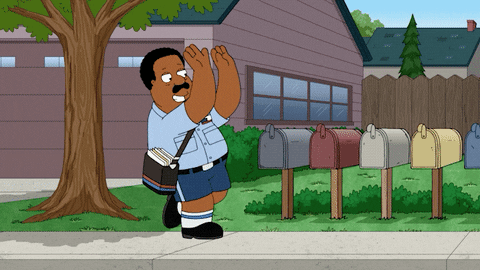Monday Mailbag #60
/The breakthrough you’ve discovered is called “honesty and consent.”
All the cool kids are trying it. —MW
Fair enough.
But more than “consent,” I think what I’m searching for in that type of interaction is understanding.
If I say, “Hey, do you want to see a magic trick?” And they say yes. Then I have their consent. But I don’t necessarily have their understanding of what I mean when I ask them if they want to see a magic trick. Because what I want from them is to know that when I show them a trick it might involve a little more involvement and suspension of disbelief than what they may be imagining.
If I ask them if they want to see a trick and they consent and I do a gambling demonstration, I think that works out well.
If I ask them if they want to see a trick and they consent and I do the Ocean’s Eleven version of Spectator Cuts the Aces from this post, then they’re going to be weirded out, because that’s not their understanding of how a magic trick is framed.
The “breakthrough” I had was that by telling them a story about a different performance, or something else I was working on, I could then indirectly familiarize them with the type of of magic I like to perform. And this would allow me to get their “consent” to seeing that type of magic without having to be a real dork about it and be, like, “So, it’s a magic trick. But I often embed it in a kind of fictional interaction. And I don’t want you to be there thinking, ‘That’s not a special kind of gum. That’s just ordinary gum!’ I just want you to try and engage with the story of this special gum. I’m not trying to convince you the gum is actually special. That’s just the story. Got it? Sign here if you consent to seeing such a trick.”
Hey Andy,
How about doing the Invisible Deck as a trick that a mysterious stranger apparently does for you via post?
That way you can secretly control the outcome for the spectator - whilst giving the credit to the mysterious magician friend.—JM
It’s a good idea, but as someone who has done a lot of faux “third party” magic tricks (where someone else outside of myself and the participant is apparently controlling the magic), I know that they have to end examinable. In these types of presentations its incumbent on you to act like a real spectator. Otherwise it just comes off as a fake-y presentation.
So at the end of the Invisible Deck you’d want to be able to look over the deck just to search for some clue in regards to how it was done. Obviously if you’re using the standard Invisible Deck, that wouldn’t be possible.
But one of the benefits of using a “third-party” presentation is that it can be easier to switch things and end clean. There are a couple reasons why it’s easier:
Because you’re not playing the part of the magician, there’s going to be a little less heat on you.
You can add in instructions from “the magician” that give you the time and opportunity to do switches, and you don’t have to justify your actions because you’re just following instructions.
Here’s what I mean. If you sent yourself an Invisible Deck in the mail and wrote instructions from “the magician” who sent it to you and the instructions said. “One of you should name any card in the deck. The other person should spread through the deck and remove the one card I reversed in this deck before I sent it to you. Don’t look at it just yet. Have whichever of you named the card hold onto it.” If, at this point in the instructions, it said to walk over to a mirror or close your eyes and repeat some phrase or to switch seats or whatever, that’s all the time you would need to do a deck switch for a normal deck.
I would recommend a deck switch for a deck whose back doesn’t match the back of the invisible deck for a few reasons. First, because it adds a Brainwave type of effect to the interaction. Second, it prevents the notion that maybe you were in on it and you just flipped over the card they named and they weren’t paying close enough attention to notice. And third it leaves you completely clean at the end.
If you don’t use a different color deck, then you end up with a duplicate of whatever card they named. Maybe it’s unlikely to get noticed, but it’s still there. If you do use a different colored deck, then even though there is another one of the named card in the deck, that can make sense if the trick is that the magician took a card from a blue deck and reversed it and stuck it into a red deck before mailing it off. There would be no discrepancy if that was the premise.
But yeah, using an ID in this way is definitely do-able because you can be so clean with it. And that’s what third-party magic requires.
For Christmas you could wrap up the ID and put a bow on it and send it to your house. Apparently from your “magician friend.” And this trick is his “gift” to you (or you and your family).

